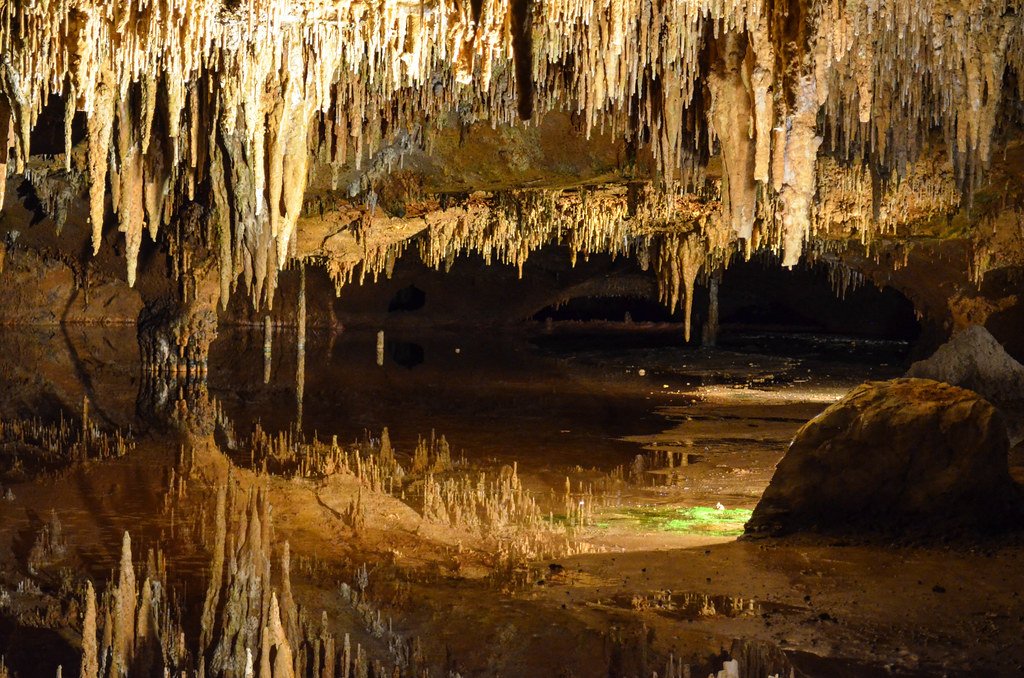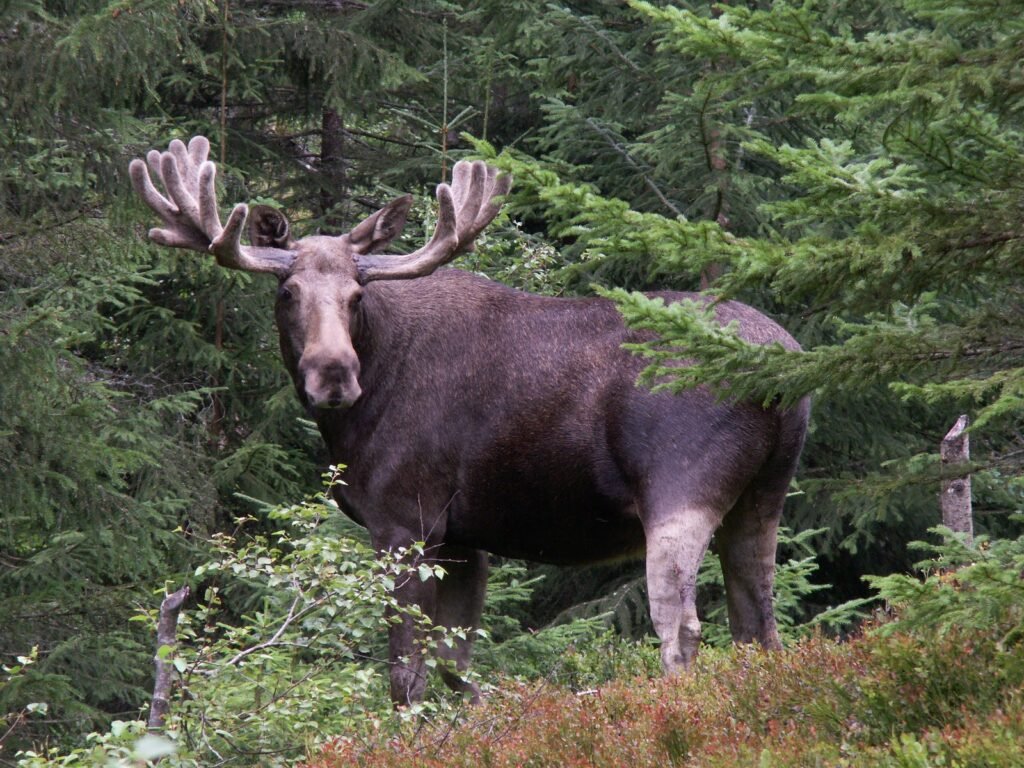Deep beneath your feet lies a world where time moves differently. In the darkness of American caves, scientists are discovering ecosystems that have remained isolated for millions of years, complete with bizarre creatures that have evolved in ways no surface animal ever could. These subterranean worlds challenge everything we thought we knew about life’s limits, harboring species so specialized they couldn’t survive a single day in sunlight.
While most people think of caves as empty, lifeless voids, biologists are uncovering thriving communities of blind fish, colorless crustaceans, and bacteria that create energy from toxic chemicals. These hidden ecosystems represent evolutionary laboratories where life has taken radical detours, producing creatures that seem almost alien yet hold keys to understanding adaptation, longevity, and survival in extreme environments.
Ancient Fish Swimming in Eternal Darkness

In the flooded caves of eastern America, small, colorless, and blind, amblyopsid cavefishes inhabit subterranean waters throughout the eastern United States. These remarkable fish have spent so long in darkness that evolution has completely rewritten their bodies. Vision-related genes of the oldest cavefish species, the Ozark cavefish (Troglichthys rosae), began degenerating up to 11 million years ago.
The analysis revealed that the various cavefish lineages had completely different sets of genetic mutations involved in the loss of vision. This means each population found caves independently and evolved blindness separately, proving that darkness is such a powerful evolutionary force that it pushes life down similar paths repeatedly.
Time Capsules of Evolution Sealed Underground

Some caves function as evolutionary time machines, preserving ancient life forms in pristine condition. Most of these species have existed longer than homo-sapiens and their forbears kept in a cave till now. Scientists have discovered caves containing 33 specific animals living in this specific cave not seen in any other habitat, representing millions of years of isolated evolution.
These sealed ecosystems provide unprecedented glimpses into how life adapts when cut off from the surface world. The unsealed cave in a time machine in evolution that gives scientists a look into other ways creatures can evolve.
Bacteria Building Ecosystems Without Sunlight

In America’s deepest caves, microscopic organisms perform impossible feats of chemistry. The cave’s biochemical processes are driven by aerobic elemental sulfur-oxidizing bacteria, which serve as the primary producers of biomass for the ecosystem. These bacteria create energy by consuming toxic hydrogen sulfide and methane, transforming deadly chemicals into the foundation of entire food webs.
Life in Romania’s Movile Cave has been separated from the outside for the past 5.5 million years and it is based completely on chemosynthesis. This represents one of Earth’s few ecosystems that functions entirely without sunlight, creating a biological world as alien as anything we might find on another planet.
Creatures With Supernatural Senses

When you lose your eyes after millions of years underground, other senses become superhuman. Their antennae, much longer than those of surface crayfish, can detect tiny water movements and chemical signals. This lets them find food and navigate their dark home with amazing accuracy. Cave spiders have developed leg spans twice as long as their surface cousins, turning their entire bodies into sensitive detection instruments.
The olm salamander – it can find prey by detecting faint electrical fields and has such an incredible sense of smell it can track food particles in water at concentrations far too dilute for humans to notice. These creatures have essentially become living sensor networks, perceiving their world through vibrations, chemical gradients, and even magnetic fields.
The Slowest Living Animals on Earth

Cave life moves at a pace that would frustrate any surface creature. The olm salamander can go without eating for up to ten years – an unbelievable adaptation to a place where finding food might be a once-in-a-decade event. This isn’t just about surviving lean times; it’s about completely reimagining what it means to be alive.
Cave crayfish species that can live up to 50 years and reproduce for 100 of those years. Meanwhile, some cave crayfish have been found to live up to 50 years. These lifespans dwarf those of their surface relatives, suggesting that the key to longevity might lie in slowing down metabolism rather than speeding it up.
Hidden Worlds Beneath National Parks

America’s most treasured landscapes conceal vast underground realms. Round-the-clock darkness and a scarcity of food make living in caves challenging. So how do cave-dwellers survive below ground in Carlsbad Caverns, Jewel Cave, Mammoth Cave, Wind Cave, and some 15 other national park units? Each cave system harbors unique species found nowhere else on Earth.
Ezell’s Cave NNL in south-central Texas is home to the Texas blind salamander (Eurycea [=Typhlomolge] rathbuni). This endangered species is found only within water-filled caves of the Edwards Aquifer, a geographically limited area near San Marcos. These creatures represent evolutionary experiments occurring in America’s most protected places.
Spider Hunters Without Eyes

In Hawaiian lava tubes, one of nature’s most improbable predators stalks its prey. The Kauaʻi Cave wolf spider (Adelocosa anops) is one of the most endangered cave creatures. Found in just a handful of caves on the Hawaiian island of Kauaʻi, this remarkable hunter has developed a unique approach to catching prey. Unlike most wolf spiders known for their excellent vision, this species has completely lost its eyes.
This blind predator has mastered hunting through pure tactile sensation. It represents the extreme end of cave adaptation, where predators must rely entirely on touch and vibration to survive in their underground domains.
Chemical Gardens of Toxic Beauty

Some American caves contain ecosystems so extreme they seem poisonous to surface life. It is notable for its unique subterranean groundwater ecosystem abundant in hydrogen sulfide and carbon dioxide, but low in oxygen. Yet within these toxic conditions, this chemoautotrophic production is the food base for 48 species of cave-adapted terrestrial and aquatic invertebrates, 33 of which are endemic to this ecosystem.
The cave ecosystem supports 48 species of cave-adapted terrestrial and aquatic invertebrates, among them leeches, spiders, pseudoscorpions, woodlice, centipedes, water scorpions, and snails. Of these, 33 are endemic. These toxic environments nurture biodiversity that rivals tropical rainforests.
Microscopic Pioneers of Extreme Survival

The smallest cave dwellers might be the most remarkable of all. A total of 123 microfungal species have been identified within the Movile Cave ecosystem, with a notably high occurrence of microfungal spores. Of these, 96 species were detected exclusively inside the cave. These fungi have evolved specialized biochemistry to thrive in environments that would kill most surface microorganisms.
Highly specialized, perfectly adapted to this difficult ecosystem, cave microorganisms show vast biodiversity with countless novel species. They’re not just surviving in caves; they’re engineering the chemistry that allows larger creatures to exist in these extreme environments.
Conservation Challenges for America’s Underground Wilderness

These face modern threats that could destroy millions of years of evolution in decades. Stuck in one small place as they are, troglobites are super-sensitive and telling signposts for the health of a given environment. Many absorb pollutants such as pesticides and sewage, suffer inordinately from droughts, and are defenseless against invasive species.
Scientists had recently discovered 255 new caves and 30 undescribed invertebrate species in Sequoia and Kings Canyon National Parks of Sierra Nevada mountains, California – “an extraordinary number for such a small area”. Yet many of these discoveries occur just as human activities threaten to destroy the delicate conditions these creatures require.
Conclusion

America’s hidden caves represent some of Earth’s most extraordinary evolutionary laboratories, where life has spent millions of years perfecting survival strategies we’re only beginning to understand. These ecosystems challenge our assumptions about the limits of life while offering insights into longevity, adaptation, and biochemical innovation that could transform medicine and biotechnology.
From blind fish that have been swimming in darkness since before humans walked the Earth to bacteria that create energy from poison, these underground worlds remind us that life finds ways to thrive in the most improbable places. As we continue exploring these hidden frontiers, each discovery reveals new chapters in the ongoing story of life’s incredible adaptability. What other secrets do you think are waiting in the darkness beneath our feet?




